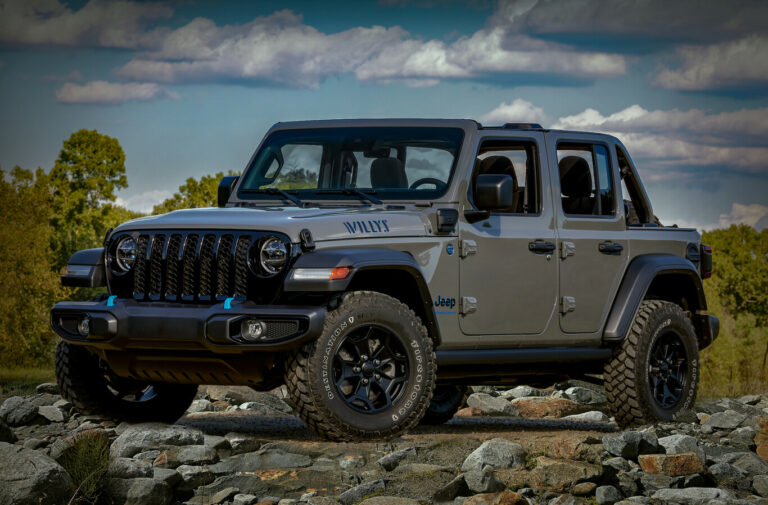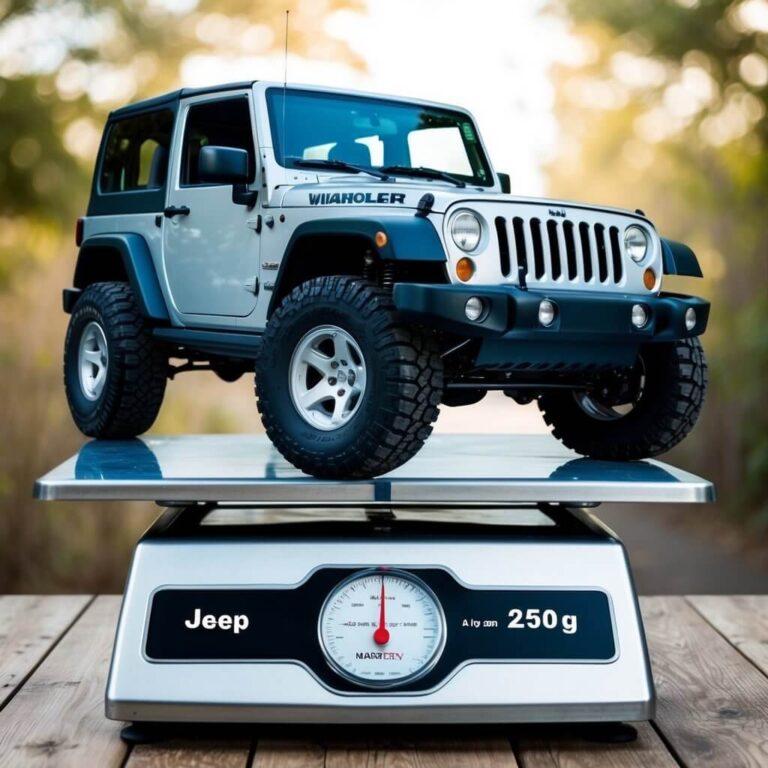Find Used Jeep Liberty For Sale: Your Comprehensive Guide to an Affordable Adventure
Find Used Jeep Liberty For Sale: Your Comprehensive Guide to an Affordable Adventure jeeps.truckstrend.com
The allure of a Jeep is undeniable: rugged capability, iconic styling, and a spirit of adventure. While newer models might stretch the budget, the used market offers a treasure trove of opportunities for those seeking the Jeep experience without the hefty price tag. Among these, the Jeep Liberty, produced from 2002 to 2012, stands out as a compelling option. It offers a unique blend of everyday practicality and genuine off-road prowess, making it a popular choice for budget-conscious buyers, outdoor enthusiasts, and anyone looking for a versatile, go-anywhere vehicle. This comprehensive guide will walk you through everything you need to know about finding and purchasing a used Jeep Liberty, ensuring you make an informed decision and drive away with a vehicle that truly meets your needs.
Understanding the Jeep Liberty: A Brief Overview
Find Used Jeep Liberty For Sale: Your Comprehensive Guide to an Affordable Adventure
The Jeep Liberty, known as the Cherokee outside North America, was introduced to replace the aging Cherokee (XJ) line. It was designed to offer a more refined on-road experience while retaining Jeep’s legendary off-road capability.
The Liberty spans two distinct generations:
- First Generation (KJ: 2002-2007): Characterized by its round headlights and somewhat bubbly design, the KJ Liberty was a robust compact SUV. It primarily offered a 3.7L PowerTech V6 engine, though a 2.4L four-cylinder and a rare 2.8L CRD (Common Rail Diesel) were also available in certain markets and years. Transmission options included a 5-speed manual, 4-speed automatic, and later a 5-speed automatic. This generation gained a reputation for its solid off-road performance, especially with the optional Selec-Trac full-time 4WD system or the Command-Trac part-time 4WD.
- Second Generation (KK: 2008-2012): The KK Liberty adopted a more squared-off, traditional SUV look, echoing the larger Jeep Commander. It continued with the 3.7L V6 engine paired with a 4-speed automatic transmission. While it retained strong off-road credentials, particularly with the available Selec-Trac II or Command-Trac II 4WD systems, it aimed for improved on-road comfort and interior refinement.
Both generations offer decent cargo space, a respectable towing capacity (up to 5,000 lbs with the V6), and the distinct Jeep aesthetic. Their rugged construction and widespread availability of parts make them attractive candidates in the used vehicle market.
Benefits of Buying a Used Jeep Liberty

Opting for a pre-owned Jeep Liberty comes with a host of advantages that extend beyond just the initial purchase price:
- Significant Cost Savings: Like most vehicles, the Jeep Liberty depreciates rapidly in its first few years. Buying used means you avoid this initial depreciation hit, getting a capable vehicle for a fraction of its original cost. This opens up opportunities to afford higher trim levels or allocate budget for aftermarket upgrades.
- Genuine Off-Road Capability: Unlike many modern "soft-roaders," the Liberty is a true Jeep. With its robust body-on-frame construction (KJ) or unibody with integrated frame (KK), solid axles, and capable 4WD systems, it can confidently tackle trails, mud, snow, and light rock crawling. It’s a fantastic entry point into the off-roading hobby.
- Practicality and Versatility: Beyond adventure, the Liberty serves well as a daily driver. It offers a comfortable ride (especially the KK), ample cargo space with fold-flat rear seats, and enough room for small families. Its relatively compact size makes it maneuverable in urban environments while still providing the utility of an SUV.
- Durability and Longevity: With proper maintenance, Jeep Libertys are known to be tough and durable. The 3.7L V6 engine, in particular, is generally reliable and capable of high mileage. Many examples on the road today have well over 150,000 miles, testament to their robust build.
- Customization Potential: The Jeep aftermarket is vast, and the Liberty benefits from this. From lift kits and larger tires to bumpers, winches, and roof racks, there are countless ways to personalize and enhance your Liberty for specific needs, whether it’s overlanding, rock crawling, or simply improving its aesthetics.
- Parts Availability: Due to its popularity and production run, parts for the Jeep Liberty are readily available and generally affordable, whether new OEM, aftermarket, or salvaged. This makes repairs and maintenance more manageable and less costly.

Where to Begin Your Search: Top Sources for Used Jeep Libertys
Finding the right used Jeep Liberty requires knowing where to look. Here are the most effective avenues:
- Online Marketplaces and Aggregators:
- AutoTrader, Cars.com, Edmunds: These large platforms aggregate listings from dealerships and private sellers nationwide. They offer extensive filters for year, mileage, price, features, and location, making it easy to narrow down your search.
- Facebook Marketplace: Excellent for finding private sellers in your local area. Listings often include more photos and direct communication, but be wary of scams and always meet in a safe, public place.
- Craigslist: Similar to Facebook Marketplace, it’s good for local private sales. Exercise caution, as with any peer-to-peer platform.
- Dealerships:
- Independent Used Car Dealerships: These lots often have a diverse inventory, including older models like the Liberty. They typically offer financing options and may provide limited warranties.
- Franchise Dealerships (e.g., Jeep/Chrysler Dealers): While less common for older models, some may have a used Liberty that was traded in. They often have better facilities for pre-sale inspections and reconditioning.
- Private Sellers: Buying directly from an owner can often yield better prices as there’s no dealership markup. You also get the opportunity to speak with the previous owner about the vehicle’s history, maintenance, and any quirks. However, private sales typically offer no warranty and require more diligence on your part regarding inspections and paperwork.
- Auctions:
- Public Auto Auctions: Can offer very low prices, but vehicles are sold "as-is," and thorough inspection can be difficult. Best for experienced buyers or those willing to take on potential repairs.
- Government Auctions (e.g., GSA Auctions): Vehicles from government fleets are often well-maintained, but specific models can be hit or miss.
- Salvage Auctions: For those looking for project vehicles or parts, but these require significant mechanical expertise.
The Smart Buyer’s Guide: What to Look For and Essential Checks
Once you’ve identified a potential Jeep Liberty, a thorough inspection is paramount. Don’t rush this process; a little time now can save you a lot of money and headaches later.
- Vehicle History Report (VHR): Purchase a CarFax or AutoCheck report. This is non-negotiable. It reveals accident history, service records, odometer discrepancies, title issues (salvage, flood, rebuilt), and previous ownership.
- Mileage vs. Condition: While lower mileage is generally preferred, a high-mileage vehicle with meticulous service records can be a better buy than a low-mileage one that’s been neglected. Look for evidence of regular maintenance.
- Exterior Inspection:
- Rust: Check the frame, rocker panels, wheel wells, and underbody thoroughly. Rust is a major concern, especially in regions that use road salt.
- Body Panels: Look for mismatched paint, uneven gaps, or signs of accident repair.
- Tires: Check tread depth and even wear. Uneven wear can indicate alignment issues or suspension problems.
- Under the Hood:
- Fluids: Check oil (color, consistency), coolant (color, level), power steering fluid, and brake fluid. Look for leaks around the engine and transmission.
- Belts and Hoses: Check for cracks, fraying, or bulges.
- Battery: Look for corrosion around the terminals.
- Engine Noise: Start the engine cold and listen for knocking, ticking, or excessive noise.
- Interior Inspection:
- Upholstery: Check for rips, tears, and excessive wear.
- Electronics: Test all lights, power windows (notorious on KJ), power locks, radio, air conditioning (ensure it blows cold), and all dashboard warning lights (make sure they illuminate and turn off as expected).
- Odors: Musty smells can indicate water leaks or mold.
- Test Drive:
- Engine & Transmission: Listen for strange noises. Accelerate smoothly, then quickly. Test for smooth gear changes, both up and down. Feel for any slipping or harsh shifts.
- Brakes: Test at various speeds. Listen for squealing or grinding. Feel for pulsation in the pedal, which can indicate warped rotors.
- Steering & Suspension: Drive over bumps and uneven surfaces. Listen for clunks or rattles. Check for excessive play in the steering wheel. Does it pull to one side?
- 4WD System: If equipped, engage both 4WD High and 4WD Low. Test in a safe, unpaved area. Listen for unusual noises from the transfer case. Ensure it shifts smoothly between modes.
- Pre-Purchase Inspection (PPI): This is the single most important step. Take the vehicle to an independent mechanic you trust, ideally one familiar with Jeeps. They will put the car on a lift and perform a thorough inspection, identifying potential issues that you might miss. The cost of a PPI is a small investment that can save you thousands.
Navigating Common Issues and Maintenance Considerations
While the Jeep Liberty is generally robust, like any used vehicle, it has its common quirks and potential issues. Being aware of these can help you during your inspection and prepare for future maintenance.
First Generation (KJ) Common Issues:
- Front Suspension Ball Joints: A very common issue. Listen for clunking noises over bumps, especially when turning. Inspect for excessive play. This is a critical safety item.
- Lower Control Arm Bushings: Can wear out, leading to clunking and poor handling.
- Power Window Regulators: Prone to failure, leading to windows not going up or down smoothly.
- Blend Door Actuators: Can cause issues with the HVAC system not directing air properly or not changing temperature.
- Rust: Especially on the frame, rocker panels, and rear hatch in areas with road salt.
- Transmission Issues: Some 42RLE automatic transmissions can develop issues, particularly if fluid changes were neglected.
Second Generation (KK) Common Issues:
- 3.7L V6 Timing Chain Issues: Less common than some other engines, but some instances of timing chain stretch or guide wear have been reported, leading to rattling noises.
- Power Window Motor Failures: Still a concern, though perhaps less frequent than the KJ’s regulator issues.
- Electrical Gremlins: Minor issues with sensors, dashboard lights, or accessories can crop up.
- Front Suspension Components: While improved, still worth inspecting for wear.
General Maintenance:
Regular oil changes, transmission fluid flushes, differential fluid changes, and transfer case fluid changes are crucial for the longevity of any Jeep Liberty. Pay attention to the cooling system, as overheating can lead to serious engine damage. Given its off-road potential, regularly inspect the underbody for damage, check drive shaft universal joints, and inspect steering components.
Negotiating and Sealing the Deal
Once you’ve found a promising Liberty and had it inspected, it’s time to negotiate.
- Research Market Value: Use Kelley Blue Book (KBB.com), NADAguides, and recent comparable sales on online marketplaces to determine a fair market value for the specific year, trim, mileage, and condition of the Liberty you’re considering.
- Highlight Flaws: Use any issues found during your pre-purchase inspection as leverage for negotiation. Get repair estimates to support your lower offer.
- Be Prepared to Walk Away: This is your strongest negotiating tool. If the seller isn’t willing to meet a reasonable price, be ready to move on. There are other Libertys out there.
- Understand Financing: If you need financing, get pre-approved by your bank or credit union before visiting a dealership. This gives you a clear budget and negotiating power.
- Paperwork: Ensure you receive the vehicle’s clear title (no liens), a bill of sale, and any service records. Understand your state’s requirements for title transfer, registration, and sales tax.
Estimated Price Range Table for Used Jeep Liberty
Prices for used Jeep Libertys vary significantly based on year, mileage, condition, trim level, 4WD system, and geographical location. The table below provides a general estimated price range for well-maintained examples. Prices will be lower for vehicles with higher mileage, significant cosmetic flaws, or known mechanical issues, and higher for exceptionally clean or low-mileage examples.
| Generation/Year Range | Trim Level (Common) | Typical Mileage Range (Miles) | Estimated Price Range (USD) | Key Considerations |
|---|---|---|---|---|
| KJ (2002-2007) | Sport, Limited | 150,000 – 250,000+ | $3,000 – $7,000 | Check for rust, ball joint wear, window regulators. Good entry-level off-roader. Diesel is rare. |
| Renegade | 120,000 – 200,000 | $4,000 – $8,000 | More aggressive styling, often better equipped for off-road. Similar mechanical concerns. | |
| KK (2008-2012) | Sport, Latitude | 100,000 – 200,000 | $5,000 – $10,000 | More refined interior, updated styling. Check for electrical issues, timing chain noise on some. |
| Limited, Renegade | 80,000 – 180,000 | $6,000 – $12,000+ | Higher trim levels with more features. Generally better on-road manners than KJ. |
Note: These are estimates. Always check local listings and conduct a pre-purchase inspection.
Conclusion
Finding a used Jeep Liberty for sale can be an incredibly rewarding experience. It’s a chance to own a vehicle that offers a genuine taste of Jeep’s adventurous spirit, combining practical utility with surprising off-road capability, all at an accessible price point. By understanding the different generations, knowing where to search, diligently inspecting potential candidates, and preparing for common maintenance, you can confidently navigate the used car market. A well-chosen and properly maintained Jeep Liberty will serve you faithfully, whether you’re tackling daily commutes, weekend camping trips, or venturing off the beaten path. With careful research and a smart approach, your next adventure could be just a used Jeep Liberty away.
Frequently Asked Questions (FAQ) about Buying a Used Jeep Liberty
Q1: Is the Jeep Liberty a reliable used SUV?
A1: Generally, yes, with proper maintenance. The 3.7L V6 engine is known for its durability. However, like any vehicle, specific years and individual maintenance history play a huge role. Common issues (like window regulators on the KJ or ball joints) are well-documented and often fixable. A pre-purchase inspection is crucial.
Q2: What’s the main difference between the KJ (2002-2007) and KK (2008-2012) generations?
A2: The KJ has a more rounded, distinct design with round headlights and body-on-frame construction. The KK adopted a more traditional, boxier SUV look, a unibody with integrated frame, and a slightly more refined interior. Both offer good off-road capability, but the KK generally has better on-road manners.
Q3: Can a Jeep Liberty really go off-road?
A3: Absolutely! Unlike many crossover SUVs, the Jeep Liberty is a true off-roader, especially when equipped with one of its capable 4WD systems (Command-Trac or Selec-Trac). With proper tires and a skilled driver, it can handle challenging trails, mud, snow, and light rock crawling.
Q4: What’s considered "good mileage" for a used Jeep Liberty?
A4: For a vehicle of this age, anything under 150,000 miles is generally considered good. However, condition and maintenance history are more important than mileage alone. A well-maintained Liberty with 200,000 miles can be a better buy than a neglected one with 100,000 miles.
Q5: Are parts for the Jeep Liberty expensive or hard to find?
A5: No, parts are generally affordable and widely available, thanks to its long production run and commonality with other Chrysler/Jeep vehicles. You can find OEM, aftermarket, and salvaged parts easily.
Q6: What are the most critical things to check when buying a used Liberty?
A6: Key areas to inspect are: rust (especially on the frame and rockers), the condition of the 4WD system (test it!), front suspension components (ball joints on KJ), power window operation, and listen for any unusual engine or transmission noises during a test drive. Always get a pre-purchase inspection by a trusted mechanic.
Q7: Is the Jeep Liberty a good daily driver?
A7: Yes, it can be. While not the most fuel-efficient (especially the V6), it offers a comfortable ride (more so in the KK), decent cargo space, and a commanding driving position. It’s practical for both city driving and highway cruising, with the added benefit of being able to handle rough terrain when needed.




